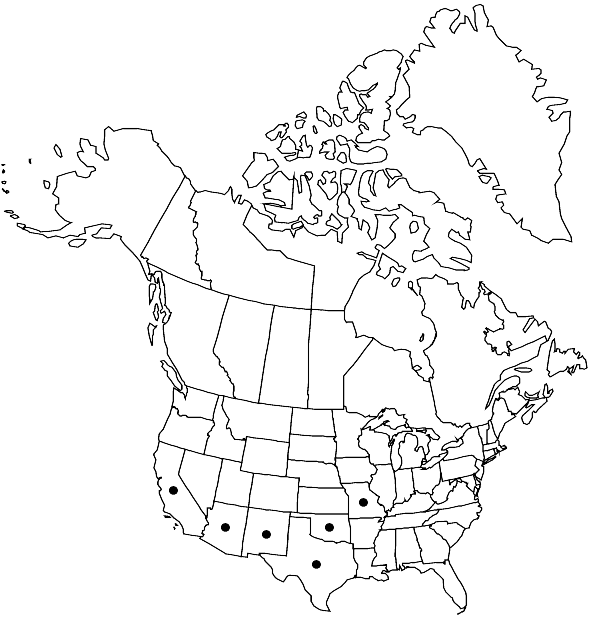Didymodon revolutus
Bryologist 16: 25. 1922,.
Plants usually green to blackish green. Stems to 0.6 cm, central strand present. Stem leaves appressed, imbricated, incurved when dry, widely spreading and not keeled when moist, monomorphic, ovate to elliptical, broadly concave adaxially across leaf, usually 0.4–1(–2) mm, base scarcely differentiated in shape, margins usually recurved to revolute to near apex but sometimes plane, entire, apex obtuse to rounded, often strongly cucullate, not fragile; costa percurrent or ending a 2–6 cells below the apex, slightly broader at mid leaf, usually strongly spurred, little tapering, with a low adaxial pad of cells, adaxial costal cells quadrate, (4–)6–8 cells wide at mid leaf, guide cells in 1 layer; basal laminal cells differentiated somewhat medially or across leaf, walls weakly thickened or thin, rectangular, not perforated; distal laminal cells 7–10 wide, 1:1, papillae absent or low, simple or 1 multiplex, rather flat papilla per lumen, lumens oval to rounded-quadrate, walls convex on both sides of lamina, 1-stratose or occasionally 2-stratose in patches. Specialized asexual reproduction rare, by unicellular gemmae in masses in leaf axils. Seta 0.4–0.9 cm. Capsule 0.7–1.5 mm; peristome teeth absent to rudimentary, irregularly ligulate, to 65 µm. Spores 9–11 µm. Distal laminal KOH reaction light brown to medium orange-brown.
Phenology: Capsule maturity not determined.
Habitat: Seep, sandstone outcrop, cliffs, associated with prairie grasses
Elevation: low to moderate elevations (100-1500 m)
Distribution

Ariz., Calif., Mo., N.Mex., Okla., Tex., Mexico, Central America, South America, Asia (Yemen).
Discussion
Distinctive characters of Didymodon revolutus in combination are: arid habitat, ovate leaves with often revolute margins, subpercurrent, strongly spurred costa (with one or more lateral costal cells wending into the lamina), one layer of guide cells, and rudimentary or absent peristome. Like Didymodon perobtusus and Bryoerythrophyllum calcareum, D. revolutus has unicellular gemmae occasionally present in the leaf axils; the similar D. brachyphyllus has multicellular gemmae, has ovate to short-lanceolate leaves that lack hydroids in the costa, and have laminal cell lumens that are quadrate or angled. In an Arizona collection (E. B. Bartram 1688, Musci Acroc. Bor.-Amer. Eur. 642, NY), D. brachyphyllus and D. revolutus were mixed, though easily separated by the above characters.
Selected References
None.